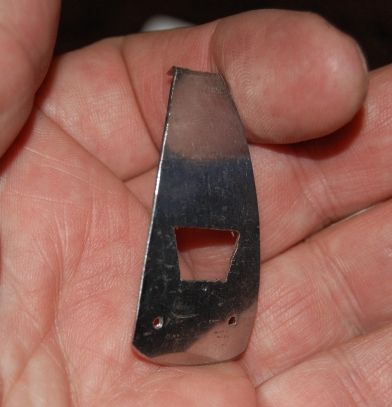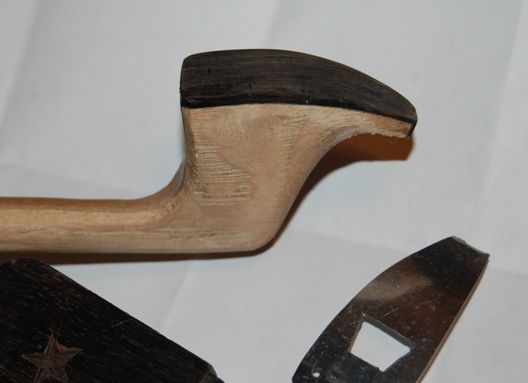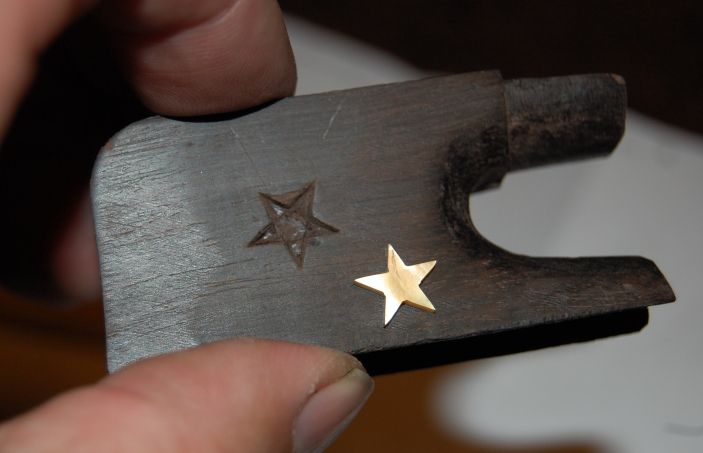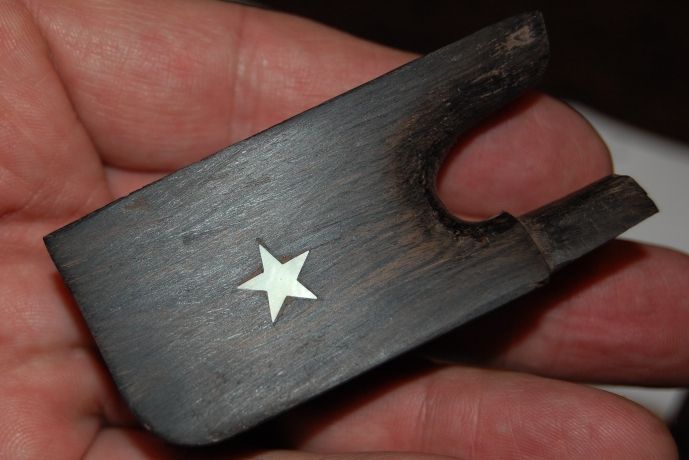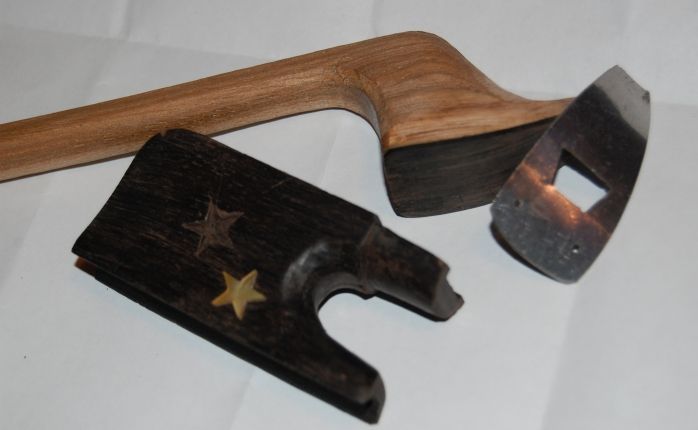Beginner-Level Fiddles
MY Beginning:
When I first began learning lutherie, in 1999, as I noted on the “about me” page, I began by purchasing about 70 instruments and a bunch of bows (60, maybe) on eBay, and practicing repairing them. I mostly sold them for pretty cheap prices.
Some were white violins I bought so that I could practice varvishing and set-up. Some were old Pfretschners or Ton-Klars, or other student instruments from the mid 1900’s. Others were surviving relics of the hundreds of thousands of cheap violins that came out of Germany and other sources in Europe, and flooded the market around the 1890’s through early 1900’s.
Some were modern cheap student instruments, made in China, poorly set-up, with horrible cheap strings and pegs. And, then, some were simply a mistake to buy, and are what we call a “VSO” (violin-shaped object). Those were not really fixable, and I eventually burned them.
What is a student violin?
Student violins technically could span the realm from VSO to fairly expensive factory-made instruments and still bear that name…obviously on one end we have instruments that are sold to an unsupecting public, and that cannot be made to play in tune, let alone sound decent. Those are a sad part of the trade. They frequently sell for less than $100, and the amount of work it would take to make them a workable musical instrument is far more than the purchase price…and still might not result in a decent instrument.
Unfortunately, right at about that same price-level, I have seen some amazingly good-sounding violins coming out of department stores, etc. where they wouldn’t know a violin from a plastic ukulele. And they sounded pretty good.
How long would they sound good? I have no idea. What percentage of the instruments actually sounded good? Again, I have no idea…the ones I picked up, tuned, and played were discouragingly good: I thought, “If a $100 instrument sounds that good, what chance do I have to compete?” But all is not lost…there are still folks who have a discerning enough ear to hear the difference, and a discerning enough eye to see the difference…so not everyone will run to Wal-Mart (or wherever) and grab their violins.
Still, a student violin does have to be affordable, or parents will sadly tell their kids, “Sorry, we can’t afford a violin. Want to play a trumpet?” So, in my mind, there is still room for the parent who can only afford a $300-$500 instrument. But how can you get one that sounds decent?
Staying Tuned and Sounding Good
What I have done (beginning with those eBay specials, and moving to other sources later) was to obtain the cheap, approximately $100 violins, and fix their problems (new, properly fitted pegs, new, properly cut bridge, new strings, etc.), and then sell them for my costs plus the labor of upgrading them. Thus, what was a $100+ instrument ends up being a $150-200 instrument, and so forth. And if I happened on an antique that was a gem, I cleaned it, repaired it as needed, set it up with good strings, a case and a bow, and sold it for $350-400.
I have only had two come back, ever– one because the climate it was taken to was far more humid, and the fingerboard warped badly (I replaced the fingerboard at no charge), and the other because the soundpost kept falling over. (??)
I re-set it three times, but finally asked the young player (a strapping tall lad with big hands,) whether he had been holding the instrument (a large viola) by gripping it across the c-bouts with his thumb and fingers. He said, “Uh-huh!” I sighed and said, “Don’t do that! That is why the soundpost keeps falling over– you have enough strength in your big hands that you are flexing the front and back plates, making the soundpost so loose it falls over.” (It never fell over again.)
All this is to say that ALL of the players (and their parents) were completely satisfied…I did have one orchestra director from an upscale school who flatly told the parents that they were to get their daughter a more expensive violin. The quality and sound was not the issue…the looks were. It did not look expensive. Sorry…
Beginner-level Student Instruments
Initially I tried to maintain a stock of every size of beginner-level student instrument…but there was never much money in them– it barely paid to handle them…so I eventually decided I only wanted to deal with the better instruments. I began offering advanced student instruments at much higher prices– still less than half what I charge for a hand-made, luthier-made instrument. But it made too big a gap– there were people being left out.
This was brought sharply to my attention recently, when a friend asked whether I could get his sister-in-law a student violin. He said she was going to get a $60 violin from eBay. He had tried to dissuade her, telling her that what she would receive would not sound good, and would not stay in tune; but she was really reluctant to spend any more money, especially because it was a 3/4 size she needed, and she knew her daughter would soon outgrow it, and she would have to spend the money again for a full-size.
So I agreed to send three instruments, at three prices. I sent a cheap “Cremona” brand student violin at $150, with Red Label strings; a somewhat better grade “Cremona” at $250, with Calvert strings, and a 60-year old “Ton-Klar” with a beautiful, one-piece back, and great tone, at $350, with Dominant strings. Each had a new case, bow, and rosin, as well as the inevitable straps to turn the violin into a backpack.
Failing the Test
(Some of you may see right away what I was doing: I put strings on the violins to match the price-point; strings that would sound better with the higher priced instrument.) I hoped that she would be able to hear the difference, but I felt that if she could not tell the difference, there was no point in arguing. They asked whether it was OK to take it to their teacher and have her play all of them. (Absolutely! I knew the teacher could tell the difference!)
The outcome? The lady still bought the cheapest one, at $150; but the teacher jumped on the $350 Ton-Klar, and bought it immediately, as she definitely saw it as a bargain. A week later, a friend of the first lady asked whether she could get one of the $150 cheapies (sigh…). But that’s OK. They will play dependably, and I back them just like I do the expensive instruments, trade-in and all. I figure maybe someday that child will want a good violin. However, I have stopped dealing in the very cheap imports.
Intermediate and Advanced Student Instruments
I can supply a decent Intermediate-student instrument for about $2,000. I That should help close the gaps, so that people can afford to play, and trade up to a better instrument later, still without bankrupting themselves.
I can buy an unfinished instrument, in the white, and do every bit of the work to complete the finishing and set-up. Because I don’t build them from scratch, they are not “signed, numbered and dated instruments;” but they are the next best thing, in terms of sound and playability. and I can sell them for about a third of what I charge for my handmade instruments.
If you need something even less costly, I will help you find one with someone else.
Used Instruments will usually fit into the Student Instrument or the Advanced Student instrument category. I do whatever upgrades are needed and sell them at prices I think are fair.
All my instruments carry the same guarantee.

 Follow
Follow

